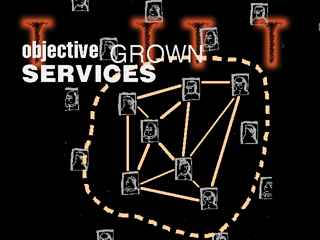| Workshop Results: Info - Eco Care
How can information technology help older people develop new social roles and younger people engage in new relationships with their elders? Through The Table Top In the future we face population explosion followed by population collapse. The alternative, as agreed at the Cairo Conference, is to strive for zero population growth. But the average age in stable populations will be over 50. There will be a lot of old people in any sustainable future and if technology does not work well for them, that will be another disaster. The `Care' group envisaged intelligence residing in objects in the real world rather than cyberspace. To represent this they have taken the table as a metaphor for new user interfaces. In their scenario, the table could be in your living room or bedroom, in the park, the school, or the local shop or café. It will respond to familiar objects and to touch rather than keyboards and codes. This combination of hardware and software is called 'through the table-top'.
How might `through the table top' work? Here's a story: It's 1999. The place: a small city, neighbourhood, village or group of flats. Four years ago, an experiment was started here. The objective was to develop new, cost and resource-efficient ways of delivering care and social support services, previously supplied by the state. The novelty of the experiment was that, instead of services being provided from outside the community at great cost, they were designed and developed in situ. The people were given free access to a communications network linking telephones and televisions within the locality. Part-time help from a small group of designers and software engineers was also available for free. Soon, people were discovering new things to do together like building up a bank of local memories and evolving self-sustaining services which they exchanged largely outside the cash economy. The old people found much enjoyment in this, their quality of life increased, and their consumption of expensive support and care services decreased -- not by a factor of twenty, but significantly enough to call the experiment a success. What made this experiment successful? * First, it was truly interactive -- it put people in touch with each other in the context of their daily lives and community. * Second, older people no longer felt alone and isolated -- even if they were unable to leave their houses. * And third, they found they could contribute something to the community themselves. A few examples of the kinds of goods and services involving food that were exchanged and sold: * Garden exchange: Access the `garden exchange' magazine through tabletop, exchange surplus vegetables with your neighbours, exchange recipes, join a gourmet club and discover a fund of ethnic and traditional knowledge about food. (This `exchange' ultimately also became the supplier of organic vegetables to five gourmet restaurants in the area.)
* Memory Cookbook: Find the recipe for octopus of a former resident of the neighbourhood through the memory banks of `table top'. * Eating together apart: Invite someone to share your meal through `table top'. Or ask someone who's far away to join you at dinner time virtually. This might be a relative in a foreign country or a student in the neighbourhood looking for a cheap, home-cooked meal.
Participants
BEYOND BEING THERE INFO-ECO WORK INFO-ECO SOCIAL CARE |
|
updated 1995 |


